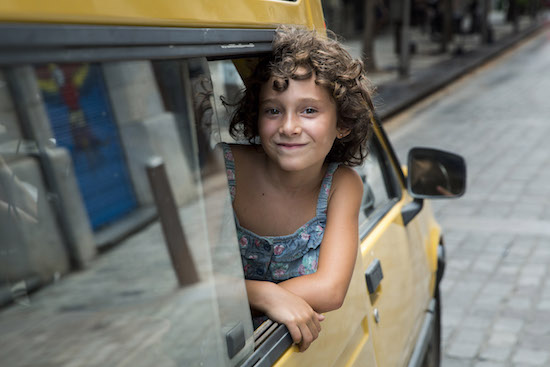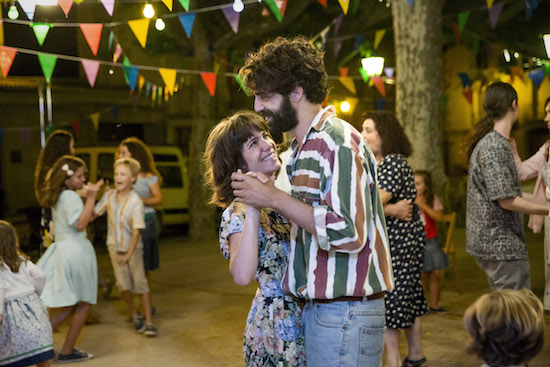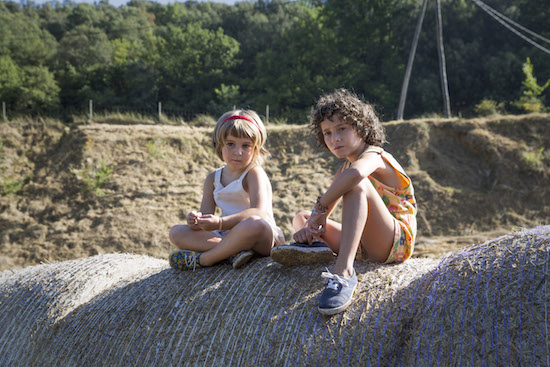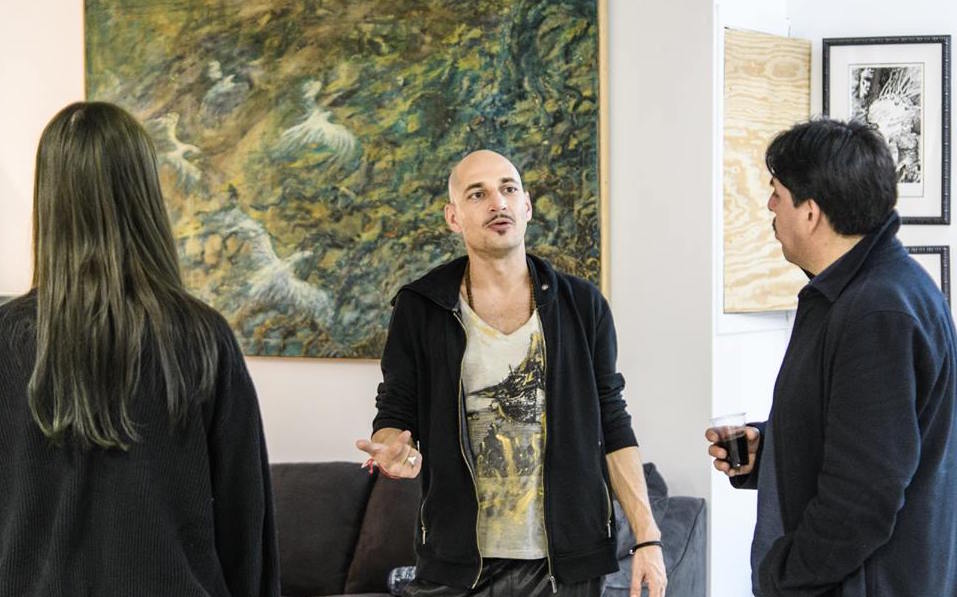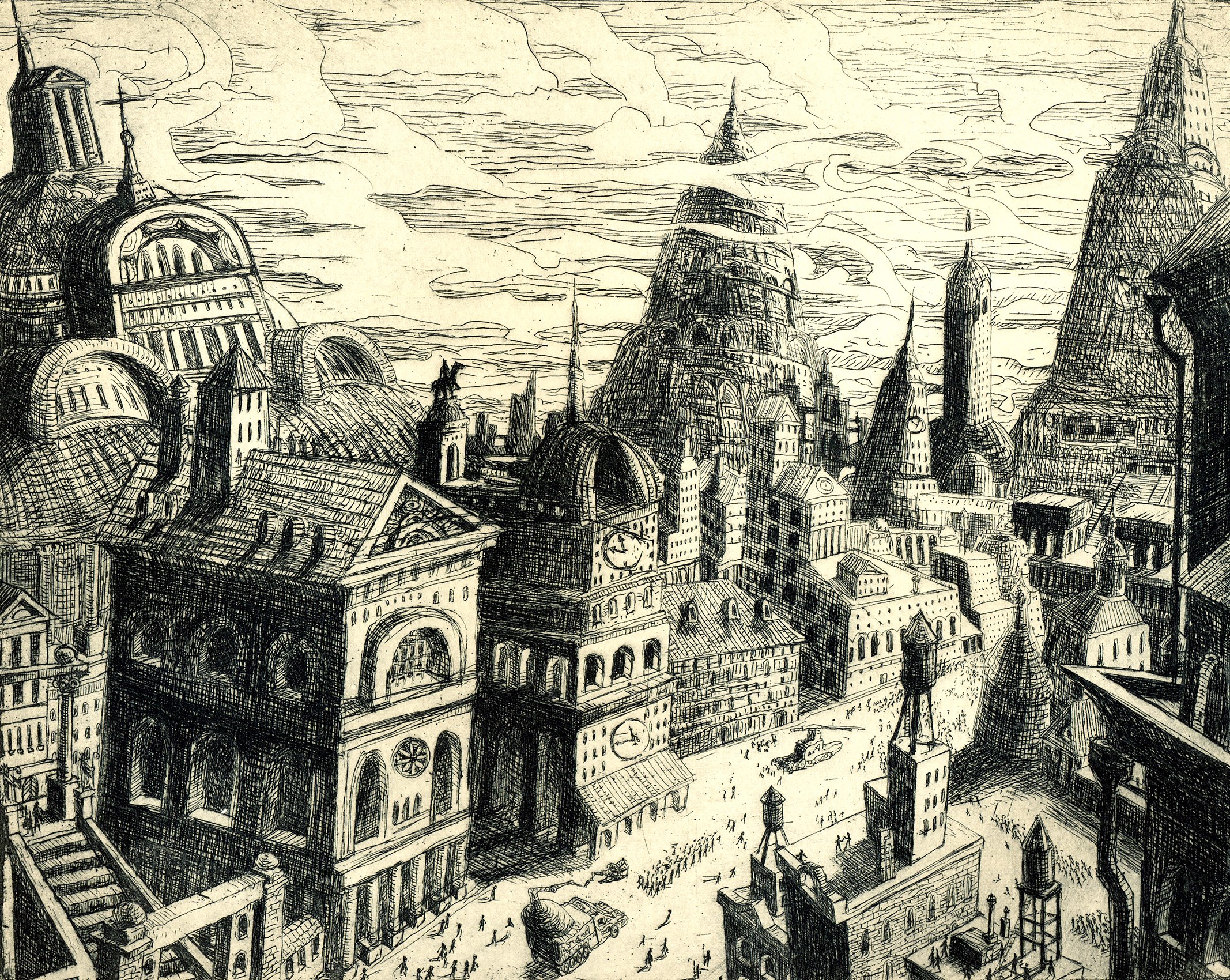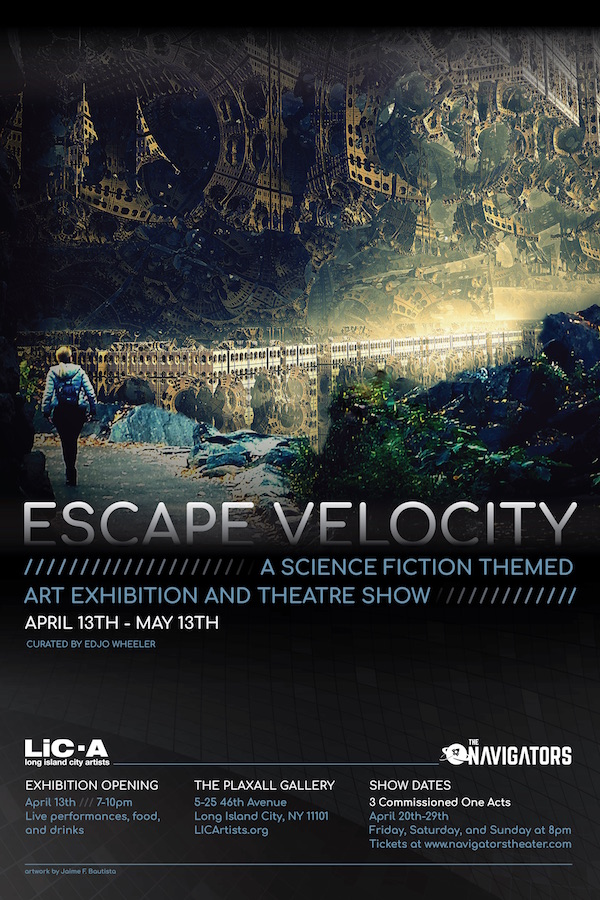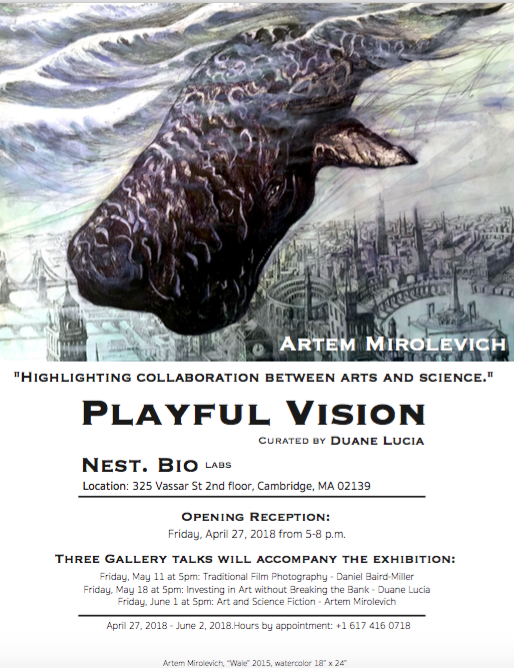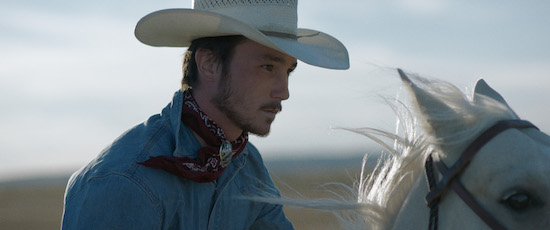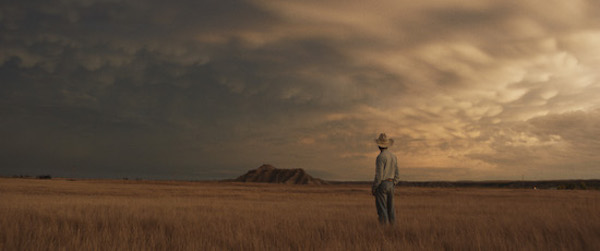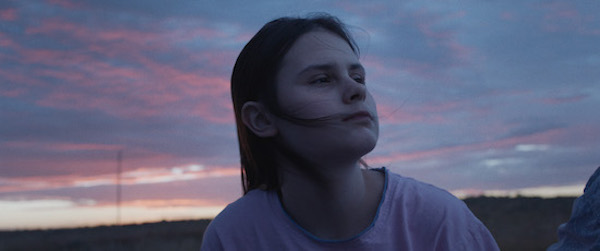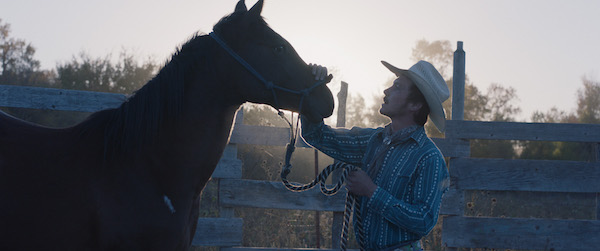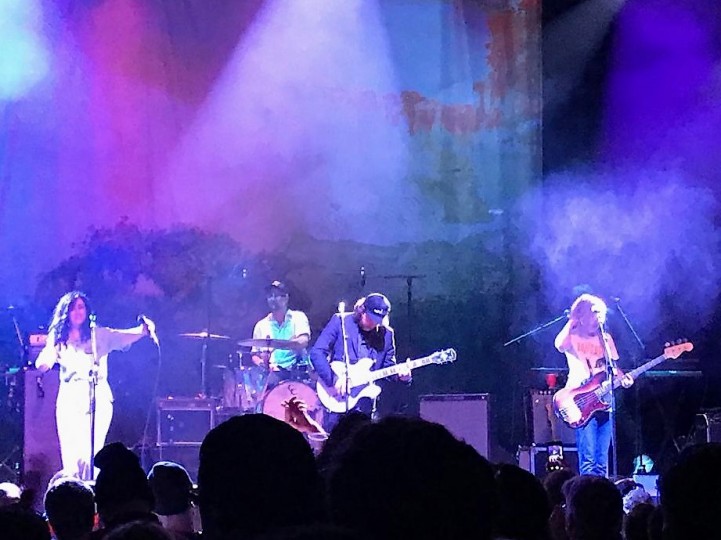- 6 years ago
-
In Summer 1993, the lovely and evocative feature film debut by Catalan filmmaker Carla Simón, a six-year-old girl slowly comes to terms with grief and a new way of life. The film’s straightforward observational style conveys complex emotions without veering into sentimentality, while the orphaned Frida (played with gravity and charisma by Laia Artigas) is not portrayed as pathetic, but realistically moody, alternating between mischievous and melancholy.
The autobiographical story (Simón lost her own parents when she was a child) begins with a busy scene of adults packing boxes around the small, watchful figure of Frida, who is being sent from her grandparents’ Barcelona home to live with her aunt and uncle in the countryside.
We discover this rustic new home along with Frida, as the camera trails her explorations around the sprawling property where crowing roosters, aggressive hens and farm life in general all seem very foreign. Esteve (David Verdaguer), the brother of Frida’s recently deceased mother, and his wife Marga (Bruna Cusi) are young and fairly laid-back, but also kind and attentive. Frida immediately befriends their daughter Anna (Paula Robles), introducing her little cousin to various toys with the standard, older-kid “hands off” proviso.
The film’s overall tone is low-key and intimate, with many close-ups of Frida’s small, pensive face. She expresses her sense of displacement in small acts of rebellion and leads the ever-willing Anna through various games, including an amusing session of dress-up. Both girls, especially the big-eyed Anna, are endearing but never saccharine; Simón allows her young actors to act and play naturalistically. Though the movie has no soundtrack, Esteve’s jazz is often playing in the background, a cool counterpart to the sunny, bucolic setting.
Marga brings Frida to the doctor for medical tests, and there are allusions to the girl’s “background.” Later as she makes friends in a playground and cuts her knee playing tag, one mother’s frantic warning hints at the nature of Frida’s mother’s illness. (It’s reminder that 1993 was, in some ways, truly a different era.)
When the girl’s grandparents visit from Barcelona, they coddle her, and naturally she basks in their attention. This frustrates Marga, who has started to believe that Frida is a bad influence on her daughter. Aside from the fact that Anna has begun talking back to her mother, Frida’s recklessness has put her cousin in dangerous situations. These tense scenarios are balanced by playful scenes of affection between Frida and her aunt and uncle; there is also a joyful visit to a local festival, which includes dancing and costumed figures with large papier-maché heads.
Summer 1993 is full of small touching moments, such as Frida’s repeated visits to a secluded grotto of the Virgin Mary in the woods, where she tries to communicate with her mother. It’s really only during these times that she seems able to express her grief.
As the days pass, Frida’s adjustment to her new surroundings doesn’t necessarily get easier and at one point she attempts to run away. Eventually, though, she feels safe enough to ask the questions that finally allow her to release her emotions.
Simón has made a finely-wrought film of great depth and compassion. With its unforced pace and wistful air, Summer 1993 weaves a potent spell that lingers some time after it ends.
Summer 1993 opens on Friday at the Film Society of Lincoln Center’s Elinor Bunin Munroe Film Center.
—Marina Zogbi
Latest News
- 6 years ago
-
It never ceases to amaze me. The abundance of extraordinary talent in the NYC music scene is obvious to anyone who seeks to experience it. Yet, so many people talk as if the scene is terrible and how difficult it is to find quality music at the venues in NYC. I will admit, the Bleeker Street music clubs do leave much to be desired, but one venue, le possion rouge, is certainly doing it the right way. LPR has made a name by bringing in experimental, eclectic and alternative artists over the past 10 years, and this past Saturday night was no exception.
Yonatan Gat performed in support of his new album, “Universalists“ which was recently released on Joyful Noise Recordings. He played three different sets, and we were fortunate to catch the last two which were truly epic. The long transplanted New Yorker showed off his masterful guitar skills, (The Village Voice named him “Best Guitarist in New York, 2013.”) shredding through an eclectic mix of ethnic sounds with merely a vocal, but it didn’t discourage fans in attendance as they marveled at his guitar playing skills. I was also impressed with his band as they were on point throughout the set, and as the sound changed, their energy was consistent and at a high level throughout. Gat’s sound is clearly focused on guitar, but I couldn’t help but watch his drummer relentlessly pounding on the skins and his evident passion for the music. This brings to mind the most anticipated part of the evening for me and apparently many others who were in attendance. The third set of the evening with the Eastern Medicine Singers.
Yonatan and some of his band mates walked off the front of the stage as the lights focused on the middle of the floor, where the Eastern Medicine Singers sat down around this huge drum. As we heard the first hymn, chant and the pounding of the drum, a new energy overtook the room- blissful, happy, appreciative for this experience. Rather than trying to explain this further, just watch this short video:
- 6 years ago
-
Dear Artem, welcome to Art For Progress. You are a New York City based artist. Please tell us about your work.
Hi Nerea, yes as you describe, I am a New York based artist, curator and entrepreneur. My imagination allows me to create a new world within each frame while drawing connections with different cultures and to my own heritage. History and mythology play a large role in influencing my work, often igniting the creative process. I am fascinated about mythology, and I am a space time voyager at heart. Traveling is also one of my biggest catalysts for art. I have traveled extensively, experiencing diverse culture, spirit, architecture and ways of life, which helped me to shape my perception and artistic vision of the world. A sketchbook always accompanies me on my journeys. When words alone cannot describe what I envisions in my mind, I just draw…
What inspires you to create such awesome paintings and landscapes?
I absorb everything around myself and filter it through my “art filter.” Books, music, architecture, friends, strangers, other artists, travel, relationships, etc inspires me to create my own world of landscapes and adventures.
I love depictions of ancient civilizations, philosophy, present society, and the exploration of ” the nature of man.”
As I have mentioned, I draw a lot of inspiration from my readings. History and mythology play a large role in influencing my work, often igniting the creative process. I am fascinated by how the two intertwine and sometimes even replace one another.
I have recently heard that you are starting an art project in NYC with some partners. Could you please describe it?
Yes! It’s a small group of six partners, mostly creative individuals. We signed a lease for a 5000 sq foot commercial loft space on Broadway and 32nd street, Manhattan. It’s mostly used for commercial purposes, such as photo and video shoot rentals as well as private events, such as gallery openings, dance performance etc. We are just starting out and need to raise some capital to keep the place going, but hope to have many interesting cultural happenings there. We are so excited about it!
You travel the world doing exhibitions, where is your work showcased?
USA, mostly in NYC, Miami, Boston, Washington, San Francisco, LA. Europe: London, Zurich, Paris, Rome, Barcelona, Riga, Moscow, etc.
My work has been exhibited in museums, galleries, novels, theaters and art fairs around the world, including: New Museum, The Armory Show, Kolodzei Art Foundation, Rothchild Collection, Art Basel Miami and Natasha Pierre & the Great Comet of 1812 on Broadway, etc.
I know that you are involved in other cultural projects. You are the manager of art pavilions around the world. Can you tell us about this?
I curated ten Russian Pavilion exhibitions in the USA and Europe between 2013- 2016, including Armory Arts Week, NYC and Miami Art Basel Week. I’m currently involved in ArtCosmos project that brings together artists and scientist for cross pollination of ideas. We did two exhibits so far, first in Barcelona in 2016, with Espronceda and Quo Artists as our European partners and a show in NYC at Salomon Arts Gallery. Both events where very successful with very interesting scientists and artists participating in the show and panel discussions. More info is available on line or upon request.
Recently, a cool short documentary was made about your life. How did that come about?
Yes, there is a documentary being made about me by Teirra Kamolvattanavith, who’s an aspiring documentary movie maker from Bangkok, Thailand. She moved to NYC and we met shortly after. According to her, she was getting disillusioned and was very surprised and happy to meet someone like me who pursued his dreams no matter what. The documentary will come out soon, and you can see the teaser here. Stay tuned!
I know that you have been presenting some projects this month, including a book presentation. Tell us what is coming next!
Yeah, I am involved in lot of ongoing projects this month. I am working on a fantastic project- a book in which is a call for action to authors to create a short story or poem inspired by art work. Authors can choose up to three images from 60 pre-selected art works and write a literary piece that relates to it. The best piece will be chosen by a jury to be published in the art book featuring various contemporary writings inspired by my art work.
The book open call was announced on April 12th (International Day of Aviation and Cosmonautics) and the design will be finalized and ready to print by September 30th.
I am also participating in a group show that opened on 13th April at Plaxal Gallery in Long Island City, New York – all science fiction art and theatre performance, including a few important artist who did some cool art for Star Wars etc.
On April 20th, I hosted a reggae concert in my studio- three different bands plus fresh art I painted in the last few month. Artem Art Studio, Queens, New York. – An art exhibit and live reggae concert
On April 27th, I have a big show opening in Boston- related to art and science curated by Duane Lucia at NestBio Lab in Cambridge, MA.
I can see you are busy! It’s great! Congratulations on your work and success Artem, and thank you very much for this fantastic interview.
You are welcome. Thanks for inviting me to AFP, it is a great project to support and help emerging artists for social change. Together the change will finally happen.
Nerea T. Ruiz
- 6 years ago
-
The story of how Chloé Zhao’s The Rider came to be is as intriguing as the movie itself. While filming her first feature, Songs My Brothers Taught Me, on the Pine Ridge Indian Reservation in South Dakota, Zhao befriended some of its Oglala Lakota residents. Born and raised on the reservation, they are both Native American and genuine cowboys, as pure a distillation (and contradiction) of Americana as exists.
One charismatic young cowboy, Brady Jandreau, a horse trainer and rising rodeo star, particularly impressed Zhao. She wanted to feature him in her next film, but couldn’t think of a story line. In April 2016, fate tragically intervened when Jandreau was thrown off his horse while competing in a rodeo in Fargo, North Dakota. The horse nearly crushed his skull, necessitating surgery and a metal plate, followed by extensive rehab. When Zhao learned that Jandreau was back training horses just weeks after his accident, she knew she had her movie. Essentially a docu-drama, The Rider is an authentic and poetic film about a young man struggling to hold on to his identity.
The film has an immediate sense of place, as Zhao makes good use of Pine Ridge and the gorgeous, wide-open South Dakota prairie. Adding to the movie’s authenticity is the cast, all playing versions of themselves. Aside from Jandreau himself (here named Brady Blackburn), his father Tim and sister Lilly have starring roles, as does former rodeo champ Lane Scott, shown recuperating from his own career-ending brain injury.
Brady, whose wiry frame, quiet demeanor and rugged good looks recall classic depictions of cowboys (with eyes and cheekbones that are pure Lakota), is shown recovering from his accident, both physically and emotionally. As friends and neighbors repeatedly pressure him to get back to riding, he tries to follow doctor’s orders to rest and stay off horses, at one point getting a job in a local supermarket. With even his father, a hard-drinking and gambling sort, teasing him about his diminished physical prowess, Brady finds comfort in his close relationship with Lilly, whose autism only enriches her droll, no-nonsense personality. Affectionate scenes between the siblings are some of the film’s lightest moments.
Though he still suffers effects of his injury, Brady badly misses the rodeo, portrayed as a wildly exciting environment, with competing cowboys its virtual rockstars. (Those of Native American descent wear feathers in their cowboy hats.) The dangers of bronc riding are just part of the allure, as one of Brady’s friends brags, “By NFL standards, I should be dead.” These kinetic scenes are juxtaposed with those of Brady visiting the rehab center and his one-time mentor Scott, who is almost entirely paralyzed and can only communicate with hand signals. The two watch videos of Scott’s glory days, when the handsome, charismatic rider dominated the rodeo. Their scenes together are poignant and disquieting, though it’s clear that Scott’s rebel spirit is still intact. This community must have trusted Zhao implicitly, given the access she was granted.
Eventually Brady begins to ride and train horses again, and we see how deeply he bonds with these animals. His first time back-in-the-saddle and the resulting ride along the prairie are beautifully shot, as we sense his freedom and exhilaration. There are also extended scenes of Brady taming and training wild horses; somehow Zhao’s crew got close enough to capture the creatures’ panicked breathing. Though watching a horse made to buck can be disturbing, it’s a reality in rodeo training, where the animals are otherwise treated with great care. Another issue that isn’t addressed head-on is that of Native American identity. Though Brady and his friends occasionally speak Sioux and there are other nods to their heritage, The Rider—as its title implies—concentrates almost solely on the personal recovery of its protagonist, which is one of the film’s strengths.
Ultimately, Brady cannot stay away from the rodeo, though there are several setbacks—physical, financial and otherwise—as he contemplates resuming bronc riding. We may cringe at the idea of him risking his life yet again, but we also understand the struggle between his desire to stay healthy for Lilly’s sake and following Lane Scott’s hand-signed advice not to give up on his dreams. As Brady declares at one point, “Cowboys have to ride.”
The Rider is a remarkable film for many reasons: its captivating subject and star, its palpable sense of place, and a truthfulness that is not overblown or hammered home. One cannot help but be swept right along with the waving prairie grass.
The Rider opens on Friday at Angelika Film Center and Landmark at 57 West.
—Marina Zogbi
- 6 years ago
-
Toronto’s Broken Social Scene closed out the band’s first tour in many years last night at the Wellmont Theatre in Montclair, New Jersey. The show which lasted around 2 hours and spanned their vast music catalogue, highlighted the strengths of a band that clearly loves playing together. The beauty in what they do comes through in how they seamlessly work through songs that range from indie rock, ska, experimental jazzy numbers and even punk, but there are no limitations. They can also do the heavier, guitar driven classic jam as well. Although the band’s studio productions are at a high level, they are one of those bands that you have to see live. With as many as 9 or 10 players on stage (including a horn section), it could be quite challenging to replicate some of their intricate productions, but they were 100% in sync throughout the show with a consistent energy and enthusiasm that shined throughout their performance.
One of the highlights of the evening was the first live performance of “Mouth Guards of the Apocalypse” from their latest album “Hug of Thunder” which was released with very positive reviews in July, 2017. This pretty much set the tone for an upbeat, joyous crowd that appreciated getting to see a band of this caliber at the Wellmont Theatre. The band admitted that they didn’t know what to expect, but were very pleased with the venue and crowd. I have to say it was a pleasure to see how much the band was enjoying the moment.
Personal highlights include the performance of “Shampoo Suicide,” and of course “World Sick,” but as expected the crowd loved classics such as”Texico Bitches” and “Almost Crimes.” On the brilliant “Shampoo Suicide,” the dueling vocals and the heavy guitar riffs made for a blissful moment of perfection. Overall, the set list was pretty balanced with a slight lean to songs from the amazing album, “You Forgot it in People” which was released in 2002.
The best line of the night was from Kevin Drew, “This is the encore. We don’t leave the stage and come back for the encore.” Let’s hope they don’t leave the stage for another long hiatus. With the successful release of “Hug of Thunder” and this tour, they should continue to write music and perform for a very long time.

